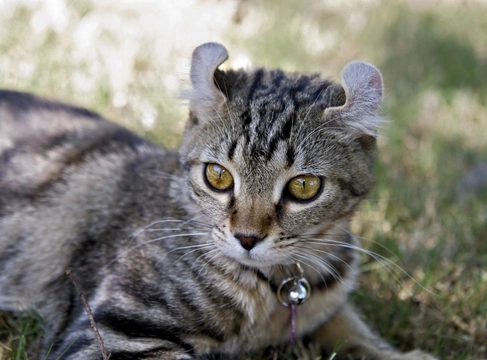
The Lovely Highlander Cat
The Highlander is a large cat and one that was only recently developed in the United States to look like a "big cat", only with a charming and affectionate personality. The Highlander may be a larger than life cat, but they are renowned for being real softies which is just one of the reasons why they are finding such a big fan base in the States and elsewhere in the world including the UK.
A little background history
The Highlander, as previously mentioned was developed in the United States in 2004 with an end goal being to create a domestic breed of cat that boasted a wild, big cat appearance about them. They were given their name a year later in 2005 with breeders then working towards setting a breed standard that would ensure the Highlander would achieve championship status with TICA.
The breed was developed through careful and selective breeding using domestic cats rather than any recognised breeds. Breeders wanted for the Highlander to have very defined physical features which included having distinct and unique curled ears. By 2008, the breed was recognised by TICA under their Preliminary New Breed.
Personality
Highlanders may be large cats, but they boast wonderful personalities and are known to be real clowns of the cat world by nature. They adore playing interactive games and thrive on human company because they are so people-oriented. Much like dogs, they like to greet their owners and visitors at the door when they arrive home and are real extroverts liking nothing more than to show off in front of strangers.
They are not known to be overly talkative, but a Highlander more than makes up for this with their energetic antics. They also like to be involved in everything that goes on in their environment and will follow an owner from room to room to check up on what they are doing. They are best suited to households where one person usually stays at home so their pet always has company.
Children and pets
The Highlander is known to get on well with children thanks to their kind and laid-back natures. They get on well with dogs they have grown up with, but care should be taken when a cat is around smaller animals and pets just to be on the safe side.
Appearance
The Highlander is a large cat and one that boasts a distinct wild look about them. They have long foreheads that slope nicely and their eyes are moderately large being slightly oval shaped and set well on a cat's face which gives the Highlander their intense gaze. They have large, wide noses and quite boxy looking muzzles, but it's their ears that set them apart from other cats because of their shape and the loose curl at the tips which can also be tufted.
A Highlander has a strong, powerful and muscular build with their hind legs being slightly longer than their front ones and well-muscled. They have large feet with very prominent knuckles and naturally short tails which they wag much like their canine counterparts.
When it comes to their coat, a Highlander can have a short or long coat with cats having nicely tufted toes. Longer haired cats have coats that lie loosely against their bodies with the hair being dense and shaggier around the belly. Highlanders come in a variety of colour and coat patterns too which includes tabby and pointed.
Health and lifespan
The Highlander is generally a healthy and robust breed thanks to the fact that the breed was carefully and selectively bred. With this said, because the breed is so new, more time is needed to fully understand if Highlanders suffer from any sort of hereditary or congenital health concerns. When properly cared for and fed an appropriate diet to suit their ages, Highlanders can live anything from 10 to 15 years.
Lastly
Anyone wanting to share a home with a Highlander might find that breeders are rare in the UK and as such it could prove challenging to find one and may need to agree to going on a waiting list for the pleasure of doing so. It's also important to make sure you contact reputable cat breeders who do their best to ensure that any kittens they breed are healthy and true to type.



